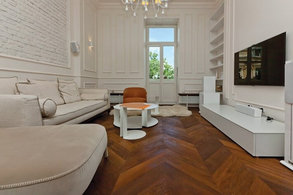Advantages and disadvantages with the Engineered Wood flooring
Hardwood floors is an extremely interesting choice for your property. It can offer you that touch of beauty and feeling of luxury. If you are looking for your classic look, engineered flooring what you should want for. Nevertheless, it is basically a setting up project.

Real woods provide homes with appealing, warm, and delicate appearance which makes it the very best option for many interior designers and families through the years. These appearances are the ones that vinyl and laminate flooring cannot match. Nevertheless, timber flooring has gained lots of attention and became popular due to the fact that engineered wooden flooring has provided a choice that’s not only more affordable but more efficient, rendering it a good choice for every home. On several occasions, it is eco-friendly with a variety of colors and finishes available. In fact, engineered hardwood flooring is among the top choices you should consider for your property.
Engineered Hardwood
The processes associated with crafting engineered hardwood floors are somewhat complex in comparison to local hardwood planks. Engineered hardwoods contain multiple layers with all the upper part in a veneer or any other preferred choice. The skinny outer piece is approximately 1/8 inch thick. Other layers of engineered hardwood include hardwood, plywood or high-density fiberwood.
The veneer top surface offers the flooring with a touch of originality and beauty as the innermost layer provides a advanced level of strength.
Concisely, engineered hardwood flooring is produced by layering woods on every other then gluing and pressing them together to ascertain layers which can be stable for flooring. These layers they fit carefully to make sure a cross-grain construction which, consequently, adds to its beauty and well resistant to water and moisture. Additionally, it hinders the wood from bending as time passes which has been the major issue faced by most householders with their local flooring methods. More so, there’s been the evolution of unique features of Wood flooring Glasgow which includes numerous new designs such as borders and Scotia.
Pros
Using the layered kind of engineered hardwood flooring, it really is more stable and less more likely to possess problem with moisture and dampness. All the layers is effective at hindering the penetration of moisture. This means that there would be less issue of floor swelling or warping plus a general reduction in maintenance.
Since engineered wood flooring needs just a thin layer from the desired wood type and supplement of others, they are usually more affordable when compared with solid hardwood.
Engineered flooring can be looked upon as eco-friendly for a number of reasons. The veneer is manually sliced and not using a machine. Which means that fewer wood materials are made as sawdust which makes then readily available for other important activities. Additionally, the trees which are employed for engineered veneer are often fast growing in comparison with hardwood trees.
Cons
Engineered wood flooring does not have significant shortcomings. Even though this form of flooring is cost-effective, there is still a number of cheaper ones you can use on the ground such as tiles, carpets or laminates.
At the same time, it is vital to choose high-quality hardwood floors to avoid problems of inferior qualities and manufacturing process. For instance, utilizing a veneer that is very thin can hinder certain other refinishing and sanding work which could stand to extend the life with the original flooring.
For more info about herringbone parquet flooring you can check our new webpage
